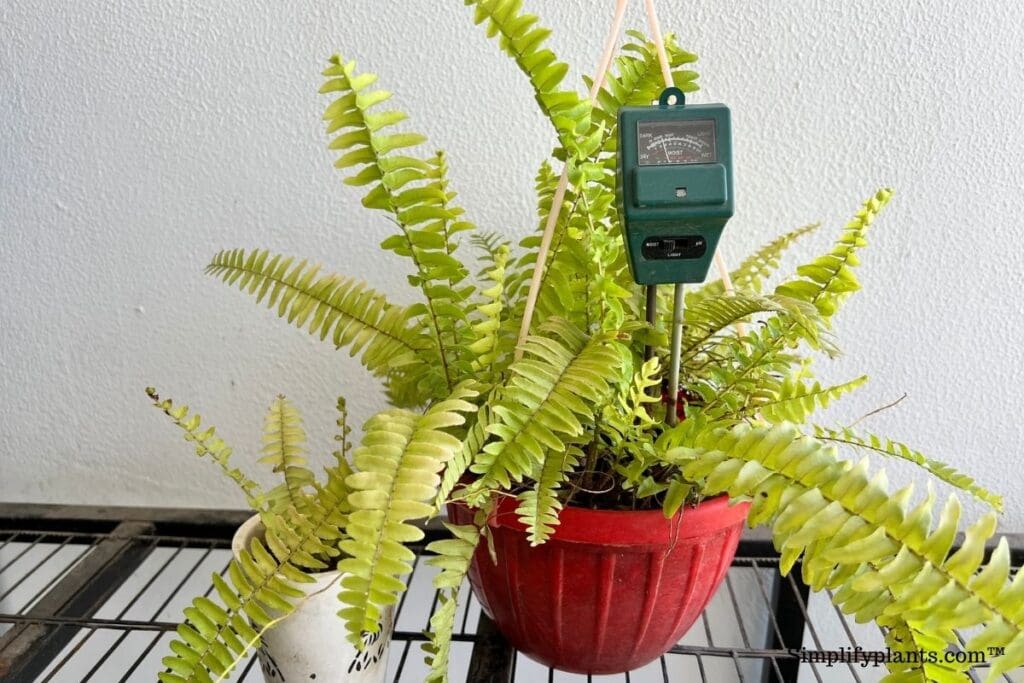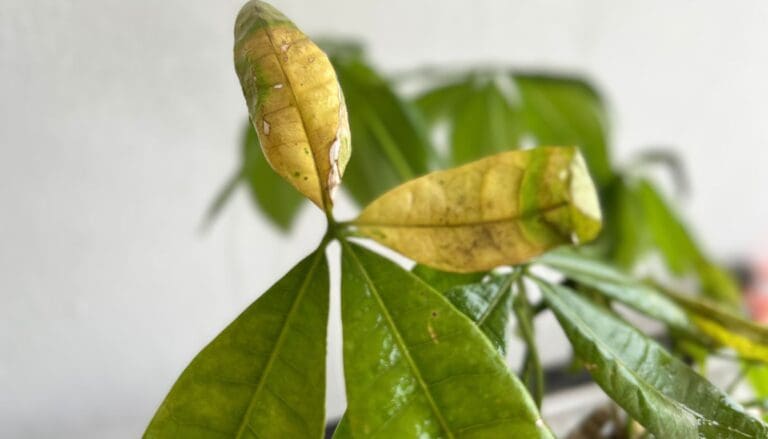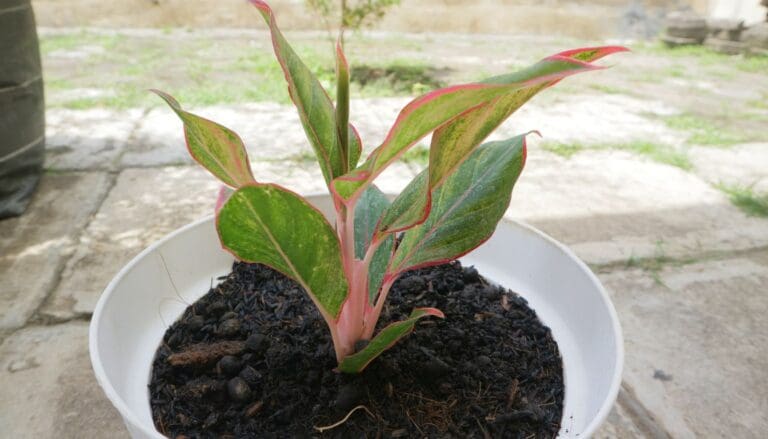Why Is My Boston Fern Drooping? (9 Causes+How To Fix)
Boston fern is one of the most popular fern species. This plant does not demand too much attention, but if it doesn’t get the right growing conditions and basic care, it will start to show various signs like droopy leaves.
The most common reasons for droopy leaves in Boston fern are incorrect watering, lack of light, humidity, and temperature stress. To prevent droopy leaves in Boston fern, Try to water your plant on time, provide adequate humidity and keep them away from drafts.
In this article, I will address all the possible reasons that cause the Boston fern to droop.

Please note: Simplify Plants is reader-supported. Some links in the post are affiliate links and I get a commission from purchases made through links in the post.
Why do I have a droopy Boston fern?
Droopy leaves or stems signify that your Boston fern is facing some problem.
When the plant fails to get proper care and the ideal conditions, it will eventually droop.
As soon as you notice droopy leaves, try to identify the exact cause and fix it before the situation gets worse.
Possible reasons that can lead to droopy leaves on your Boston fern are:
- Underwatering
- Overwatering
- Inadequate lightening
- Overfertilization
- Underfertilization
- Lack of humidity
- Temperature stress
- Repotting shock
- Pests infestations
Let’s understand how these make your Boston fern droop.
Underwatering

Boston fern prefers to stay in moist conditions, but if you don’t water the soil for a prolonged period, the leaves will eventually droop.
Due to a lack of water, the plant becomes dehydrated and weak.
This makes the plant lose its turgidity, and it begins to show signs like droopy leaves.
If you want to find out whether the Boston fern is underwatered, look at these signs:
- Curly and crispy leaves.
- Leaves turn brown at the edges and tips.
- Dry and compact soil.
- Use a soil meter to check soil’s dryness.
How to fix underwatering?
Fixing underwatering is easy as compared to overwatering.
- If the leaves are severely damaged, prune them off. This will help your plant grow new leaves.
- After pruning, take a chopstick and poke some holes into the soil to aerate it.
- Water the soil and soak it for at least 3 minutes straight until the water comes out from the drainage holes.
- You can also recover the plant in another way. Bring a container filled with 3-4 inches of water. Take out the plant from the pot and place it in the container for at least 30-45 minutes.
- Once the water is completely soaked, place the plant back into the pot and keep it in bright indirect sunlight to let it dry.
- If you forget to water the plant frequently, make a watering schedule using a calendar.
- Ensure you water Boston fern every week after checking the soil’s moisture level. To check, use a moisture meter.
- If the topsoil is 2-3 inches dry, don’t wait any longer, and water immediately.
Also read: How To Water Boston Fern? (How Often, How Much & More)
Overwatering

Overwatering is one of the most common causes of Boston fern drooping.
It is way more harmful than underwatering as the consequences are difficult to deal with and might even kill your plant.
The plant can get overwatered if it gets poorly drained soil, no drainage holes in the pot, and insufficient light and water during its dormant period.
When the plant remains in waterlogged condition for a long period, the air circulation inside the soil gets blocked.
The absence of oxygen supply inside the soil suffocates the roots because of which the roots no longer can breathe and function properly.
This results in root rot, and the roots fail to provide moisture and nutrients to the plant, making it droopy.
You can identify overwatering by looking at the signs such as:
- Damp and soggy soil
- Lower leaves turning yellow
- Brown edges and tips
- Curly leaves
- A foul smell coming from the soil
How to fix overwatering?
Overwatering is difficult to fix, but the plant can get healthy again if you treat it on time.
- Stop watering the plant immediately.
- Place the plant in bright indirect sunlight to let the soil dry.
- Try to provide good air circulation for faster recovery.
- If Boston fern is still in the same condition, take out the roots from the pot to check whether they are infected.
- If yes, remove the decaying roots and spray fungicide over the remaining healthy roots.
- After that, repot Boston fern in a new pot using a new potting mix.
- Always choose a pot 2 to 3 inches larger than the previous pot. This will provide enough space for the roots to grow properly.
- After repotting, take proper care of the Boston fern and ensure you don’t fertilize or water the plant until it is fully recovered.
Incorrect lighting

Boston ferns need indirect sunlight for growth.
But if it fails to get proper light, the leaves will droop.
If the plant grows in a low light condition, the process of photosynthesis slows down, and the plant fails to get the energy to function.
Because of weakness, the leaves of the Boston fern begin to droop.
Exposing Boston fern to intense and direct sunlight can dehydrate the plant due to an increased transpiration rate.
The plant becomes weak because of dehydration, and the leaves start to droop.
Signs of too much light:
- Discoloration of the leaves
- Burnt and scorched leaves
- Curly leaves
- Bleached spots on the leaves
Signs of low light:
- Stretched and leggy growth
- Faded green and yellow leaves
- Stunted growth
- Smaller leaves
How to fix the lighting?
- Keep Boston fern in an area where it will receive indirect sunlight. Try to place it near the north or east-facing window as the light is already filtered in these areas. And it will also protect the plant from sunburn.
- Avoid keeping the plant near a west or south-facing window because the light is too intense here. Even if you want to keep it, place the Boston fern a few feet away from the window and filter the light using sheer curtains, window films, etc.
- When the light is low, relocate the plant to a bright area. If natural light is not enough, use artificial lights.
Also read: What Kind Of Lighting Does A Boston Fern Need?
Overfertilization

Boston ferns need a little amount of fertilizer once a month to thrive.
Fertilizing excessively or too frequently will harm the plant.
Overfertilization doesn’t encourage new and fast growth.
Instead, it damages the entire plant in various ways.
When Boston fern is frequently fertilized with higher doses, the remaining fertilizer inside the soil doesn’t get used.
This extra fertilizer burns the root system.
The damaged and unhealthy roots will fail to transfer moisture and nutrients to the plant needed for daily activities.
This will cause weakness in the plant, and it will droop.
Signs of overfertilization are:
- The white crust on the soil surface
- Brown spots on the leaves
- Wilting of leaves
- Tips or edges turning brown and yellow
- Black roots
How to fix overfertilization?
If you have recently overfertilized your Boston fern, the damage is minor, and you can easily recover them.
- At first, remove the top 2 inches of the soil and add a new layer.
- Water the plant thoroughly about 3 to 4 times to let the excess fertilizer come out from the soil. After watering, place the plant in bright indirect sunlight.
- After a few days, you will see the plant recovering.
But if the damage is major, you need to change the entire soil by repotting.
First, prune off the damaged leaves and roots and then repot the plant using a fresh soil mix.
Make sure you don’t stress out the plant while repotting.
Also read: Should I Fertilize My Boston Fern? (Ideal Fertilizer+When & How Much)
Underfertilization

Boston ferns need fertilizer to encourage healthy and faster growth.
The soil does not contain all the required nutrients that the plant needs.
Even if it does, it loses its nutrients every time you water the plant.
So, if you don’t fertilize Boston fern during its growing season, it will fail to get the energy and strength needed for growth.
This causes the plant to droop.
Signs of under fertilization:
- Slow growth or even no growth
- Weak stems and branches
- Faded leaves
How to fertilize the Boston fern?
Fertilize Boston fern once a month during the summer and spring seasons for healthy growth.
Provide Boston fern with a water-soluble fertilizer with an NPK ratio of 20:10:20.
Before fertilizing, dilute the fertilizer with water at half strength to prevent overfertilization.
Avoid fertilizing your Boston fern during the winter season as it remains dormant during this time.
Lack of humidity

Boston fern is a tropical plant, and it needs a high humidity level to survive.
This plant needs at least a 50% of humidity level.
But if the humidity gets below 50%, the plant can suffer.
When humidity is low, the transpiration rate increases, which results in huge moisture loss from the plant’s leaves.
It’s difficult to identify the problem of low humidity because the signs of both low humidity and underwatering are the same, like crispy, dry, curly, brown, and droopy leaves.
To identify the humidity level, you have to use a hygrometer to determine the exact humidity around the Boston fern plant.
How to raise the humidity?
There are many ways to increase humidity around your Boston fern.
Let us discuss all the ways.
- Mist the plant by spraying it with water. This increases the humidity for some time.
- Use a humidifier to increase the humidity inside the house.
- Keep Boston fern together with other houseplants to increase moisture through transpiration.
- You can also use a tray filled with water and pebbles. Then place the plant in it. The evaporation from the tray will help to increase humidity around the plant.
- You can also keep the plant inside the bathroom, as in these areas, the humidity remains high.
Also read: Should I Mist My Boston Fern? (How Often+Pros & Cons)
Temperature stress

Boston fern is a tropical plant, requiring a warm temperature between 65-75°F.
Unsuitable temperatures make the plant weak and unhealthy.
Both cold and hot temperatures can cause droopy leaves as the plant faces difficulty adjusting to the environment.
If the temperature rises above 95°F, the plant gets dehydrated quickly because of extreme heat.
This results in droopy leaves in Boston fern.
But if the temperature drops below 40°F, it can damage the plant’s cells, leading to weakness in Boston fern.
This causes the leaves to droop.
Another reason that can cause temperature stress to the Boston fern is when you have recently introduced the plant to a new environment.
Sudden change shocks the plant to an extreme level, so it fails to cope with the changing environment, leading to droopy leaves.
If the plant is experiencing temperature stress, you will get to notice:
- Brown tips or edges on the leaves
- Stunted growth
- Abnormal curling of the leaves
- Wilted and droopy leaves
How do you maintain the temperature?
To maintain a stable temperature around Boston fern, you need to protect your plants from extreme temperatures.
- Keep the plant away from frosty windows, doors, and air conditioners.
- Also, keep your Boston fern away from heating objects like vents, heaters, radiators, fireplaces, etc.
- If you don’t want to expose the plant to sudden temperature, avoid keeping it near windows or doors that frequently open and close.
- Use a thermostat device to maintain the temperature inside the house.
Also read: Boston Fern Temperature Tolerance: +Ideal Temperature
Transplant shock

Transplanting can shock Boston fern due to an unexpected change in its growing environment.
This happens because the roots might get hurt while doing the repotting process.
Therefore, the damaged roots can no longer transfer water and nutrients to the plant, leading to weakness and droopy leaves.
Also, the plant can be stressed if you have re-potted it at the wrong time.
Boston fern remains in a dormancy period during the winter season, so if you have repotted the plant during that time, it will suffer from stress.
Due to sudden disturbance, the plant fails to accept the sudden changing environment, and the leaves start to droop.
You might notice signs like wilting, falling, and yellowing of leaves during a transplant shock.
How to prevent transplant shock?
You can’t prevent transplant shock because this is natural to see the plant stressing out because of changing environment.
But you can reduce it to some extent.
- While repotting, be very careful when you remove the damaged roots. Even a small mistake can stress the plant.
- Choose potting soil that is similar to the previous one. Otherwise, the plant can get stressed due to different soil compositions.
- Water the plant adequately after repotting to reduce the stress.
Also read: Do Boston Ferns Like To Be Root Bound? (+When To Repot)
Pests infestations

Many sap-sucking pests like spider mites, aphids, mealybugs, thrips, and scales can attack your Boston fern.
These pests feed on the leaves and suck out all the sap from them.
This dehydrates the plant and makes it completely unhealthy and weak, which leads to droopy leaves.
You should treat the pests on time.
Otherwise, they can spread to all the parts of your plant quickly, even ending its life.
Signs to look up if pests attack your plant:
- Small webs in the leaves corner
- White or black spots on the leaves
- Silver dots on the leaves indicate mites.
- Distorted leaves
How to control pests?
- Give a shower to the plant so that the pests will wash away.
- After showering, remove the remaining pests by rubbing wet cotton balls in the infected area. Make sure you dip the cotton balls in isopropyl alcohol and then use it.
- Spray Neem oil to the entire plant to get rid of the pests.
- You can also use insecticidal soap.
- If the condition is serious, you can use pesticides to kill pests.
- After treating your plant from pests, make sure you spray neem oil every month so that the pests will not attack the plant again.
Also read: Boston Fern Pests And Diseases: Common Bugs & Diseases+How To Fix
Should I prune the droopy leaves?

You can prune the leaves only when the damage is more than 50%.
If you notice droopy, brown, crisp, and yellow leaves, pruning them off is the best option for encouraging new growths.
Use a sharp and sterilized scissor to make clean cuts, and make sure you don’t remove the entire leaf until and unless all the fronds are damaged.
Only remove the infected and damaged parts.
Final words
Many reasons can cause droopy leaves in Boston ferns. You have to look after the plant carefully to identify the exact cause. Now you know every possible reason behind droopy leaves, identifying them will be much easier.
If you don’t want droopy leaves in your Boston fern anymore and want to prevent it, provide it with proper growing conditions.
Providing the plant with the basic requirements without ignoring even a single need will help you to prevent droopy leaves on your Boston fern.
Reference: University of Florida, The University of Arkansas Division, Texas A&M University System, The University of Georgia, University of New Hampshire, Wikipedia, The Royal Horticultural Society.
Recommended Garden Supplies
| Product Image | Our Recommended Gardening Supplies | Check Offers! |
|---|---|---|
Top Top
Top
Top
Top
Top
Top
Top
Top | rePotme Houseplant and Tropical Classic Potting Soil Mix | Check Offer On Amazon |
 Top
Top
Top
Top
Top
Top
Top
Top | Espoma Organic Indoor Plant Food | Check Offer On Amazon |
 Top
Top
Top
Top
Top
Top
Top
Top | GooingTop LED Grow Light 6000K Full Spectrum Clip Plant Growing Lamp | Check Offer On Amazon |
 Top
Top
Top
Top
Top
Top
Top
Top | Soil Moisture Meter | Check Offer On Amazon |
 Top
Top
Top
Top
Top
Top
Top
Top | Govee Hygrometer Thermometer, Bluetooth Enabled! | Check Offer On Amazon |
 Top
Top | LEVOIT Humidifiers for Large Room(Best For Plants) | Check Offer On Amazon |
 Top
Top
Top
Top
Top
Top
Top
Top | Upgraded DIY Automatic Drip Irrigation Kit, 15 Potted Houseplants Support | Check Offer On Amazon |
 Top
Top
Top
Top
Top
Top
Top
Top | Stainless Steel Heavy Duty Gardening Tool Set | Check Offer On Amazon |
 Top
Top
Top
Top
Top
Top
Top
Top | Bonide Insecticidal Soap | Check Offer On Amazon |
 Top
Top
Top
Top
Top
Top
Top
Top | Bonide 32 oz Spray Neem Oil for Organic Gardening | Check Offer On Amazon |
 Top
Top
Top
Top
Top
Top
Top
Top | Garden Safe Fungicide | Check Offer On Amazon |






